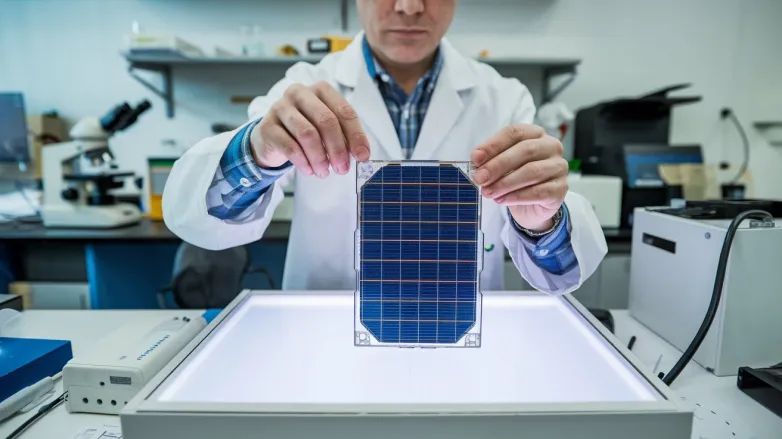New Cross-Linking Method Boosts Perovskite Solar Cell Stability
- Revolutionary research boosts halide perovskite solar cells' efficiency to over 25%, paving the way for robust, moisture-resistant power solutions!

Researchers from The Hong Kong Polytechnic University, Beijing Institute of Technology, and UCLA have developed a new asynchronous cross-linking strategy to enhance the stability of halide perovskite solar cells, known for their fragility and moisture sensitivity. By pre-embedding divinyl sulfone (DVS) into perovskite precursor solutions, the team achieved controlled crystallization and post-treated the films with glycerinum to create a robust cross-linking scaffold. This process improves water resistance and reduces defects.
The advanced technique led to a remarkable solar cell efficiency exceeding 25% (certified at 24.6%) and a maximum open-circuit voltage of 1.229 V, nearing the theoretical efficiency limit. This innovative approach not only protects the perovskite material during crystallization but also enhances moisture resilience, aiding in the potential commercialization of perovskite solar technology.
How does the new cross-linking strategy improve the stability of perovskite solar cells?
- Controlled Crystallization: The introduction of divinyl sulfone (DVS) into the perovskite precursor solutions allows for a more uniform and orderly crystallization process. This minimizes the formation of defects that can compromise the integrity and efficiency of the solar cells.
- Post-Treatment with Glycerinum: After crystallization, treating the cells with glycerinum fortifies the structure further by creating a cross-linked network. This network acts as a barrier against moisture ingress, which is a significant problem for conventional perovskite solar cells.
- Improved Water Resistance: The cross-linking strategy not only strengthens the material but also enhances its longevity and performance in humid environments. This aspect is crucial as moisture sensitivity has been a key barrier to the widespread adoption of perovskite technology.
- Defect Reduction: By employing this cross-linking method, the number of defects within the perovskite film is significantly reduced. Fewer defects correlate with improved charge transport and overall device performance, leading to higher efficiency rates.
- Enhanced Device Stability: The new approach directly addresses the stability issues associated with traditional perovskite cells. Enhanced structural integrity translates to better operational stability over extended periods, making these solar cells more reliable in real-world applications.
- Commercial Viability: With improvements in both efficiency (exceeding 25%) and stability against environmental factors, the new strategy moves perovskite solar cells closer to commercialization. This is vital for attracting investments and fostering broader adoption in the renewable energy market.
- Scaffold Formation: The cross-linking scaffold created by the DVS and glycerinum interaction forms a protective matrix around the perovskite crystals, which not only offers mechanical support but also helps in maintaining the active material's properties during thermal and photonic stress.
- Long-Term Performance: The enhancements from the cross-linking strategy indicate potentially extended lifetimes for the solar cells, which could reduce the costs associated with replacement and maintenance, making them more appealing for both residential and industrial applications.
- Research Significance: This method represents an important step forward in materials science and renewable energy technology, showcasing how innovative chemical strategies can solve longstanding challenges in solar cell performance and reliability.
- Potential for Hybrid Solutions: The success of this technique could inspire further research into hybrid materials that combine perovskite with other stable, high-efficiency materials, potentially leading to even greater efficiencies and larger application scopes in solar technology.
Also read


